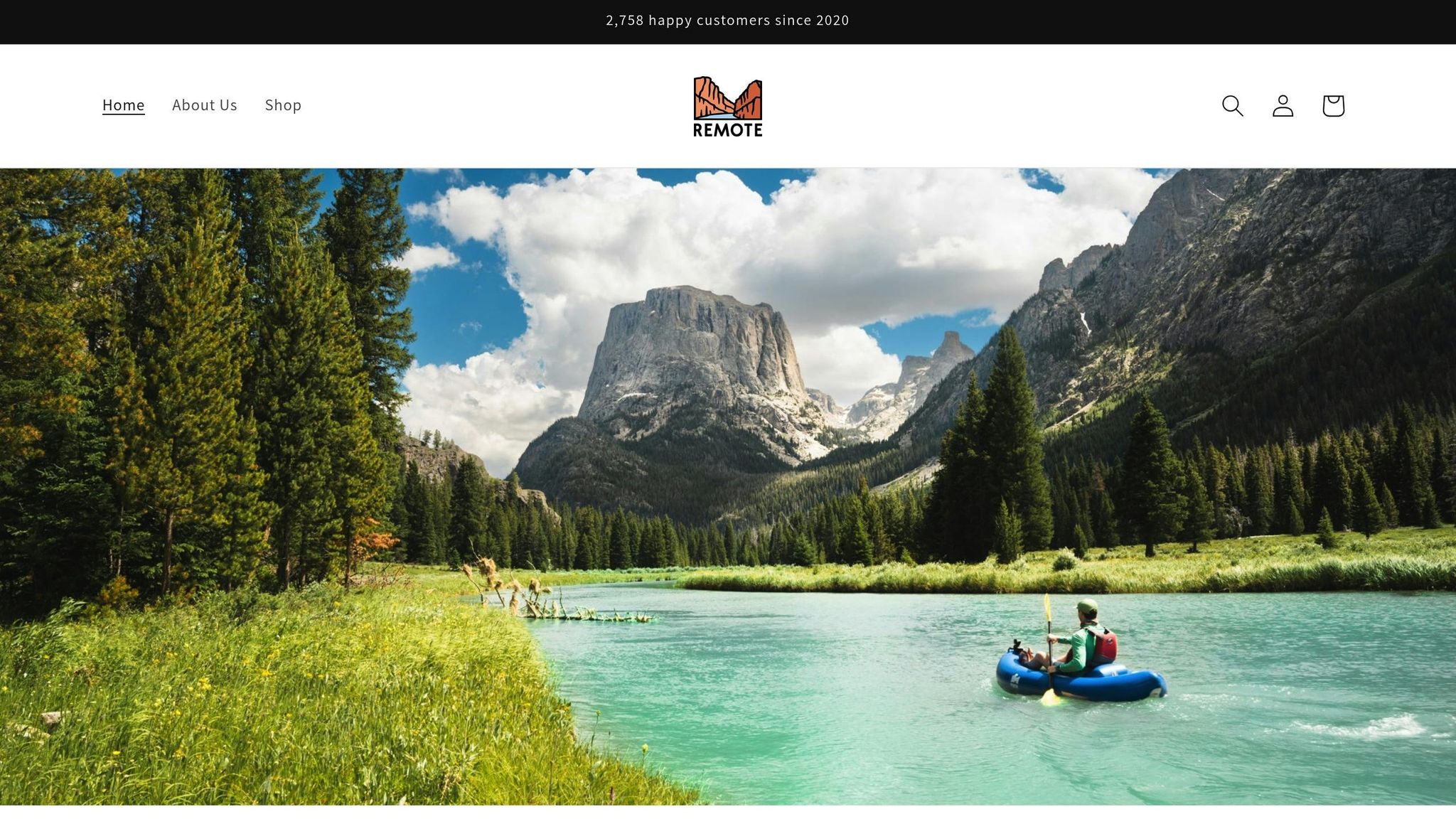Creating a waterproof bag that keeps your belongings dry requires attention to three main factors: zippers, seams, and materials. Each plays a critical role in ensuring water stays out, whether you’re dealing with rain, spills, or even submersion. Here’s what matters most:
- Wasserdichte Reißverschlüsse: Regular zippers let water seep through. Waterproof options like polyurethane-coated coil zippers, molded tooth zippers, or welded zippers create tight seals to block water.
- Seam Sealing: Stitched seams can leak, so manufacturers use thermowelding (heat bonding) or seam tape to seal these weak points.
- Durable Coatings and Fabrics: Materials like TPU-coated nylon or PVC offer strong water resistance, while eco-friendly options like PFC-free coatings and recycled fabrics are gaining popularity.
The right combination of these features, along with rigorous testing for durability and waterproofing, ensures a bag can handle various conditions, from outdoor adventures to daily commutes.
Do Waterproof Zippered Dry Backpacks Work? (Remote Designs Review)

Waterproof Zippers: Types, How They Work, and Performance
Standard zippers have a common flaw – they let moisture sneak through the gaps between their teeth. Waterproof zippers tackle this issue by incorporating barriers, coatings, and smart designs that form a tight seal.
The challenge for waterproof zippers is striking the right balance: they need to block water effectively while still opening and closing smoothly. The best options can handle thousands of uses without losing their water-resistant properties.
Types of Waterproof Zippers
Coil zippers with polyurethane coating are a popular choice for waterproof bags. These zippers feature interlocking plastic coils that create a snug fit. A thin polyurethane layer is added over the zipper, forming a flexible barrier that moves easily with the fabric. This design is ideal for bags that require frequent access, like gym bags or camera cases.
Molded tooth zippers take a different approach. They use individual plastic teeth, which are injection-molded directly onto the zipper tape. The precise shape of each tooth ensures a tighter interlock compared to coil zippers. Though heavier, these zippers are highly durable, making them perfect for outdoor gear that faces tough conditions.
Welded zippers are the premium option for waterproofing. Instead of stitching, the zipper tape is thermally welded to the fabric of the bag. This eliminates needle holes, which are potential entry points for water. The welding process creates a bond that’s even stronger than the fabric itself, ensuring maximum waterproofing.
How Waterproof Zipper Systems Work
Understanding how these zippers achieve their waterproof seal reveals the engineering behind them. Most systems begin with a water-repellent coating applied directly to the zipper teeth. This coating causes water to bead up and roll off, preventing it from slipping between the teeth.
Gasket systems take waterproofing further by incorporating a rubber or silicone seal along the inside of the zipper. When the zipper is closed, the gasket compresses to form a watertight barrier. These gaskets need to remain flexible in cold temperatures and retain their shape after repeated use.
Storm flaps add yet another layer of protection. These flaps are made from waterproof fabric and cover the entire zipper. Typically secured with Velcro or snaps, they provide critical defense in heavy rain or situations where the bag might be submerged. While they add some bulk and an extra step to accessing the bag, they’re essential for extreme conditions.
Some advanced systems also include pressure-equalization features. These small vents or flexible panels prevent pressure buildup inside the bag, which could otherwise force water through the zipper. This feature is especially useful for bags used in environments with shifting altitudes or temperatures.
Testing Zipper Performance
To ensure waterproof zippers live up to their claims, rigorous testing is essential. Water submersion tests are the industry standard for evaluating performance. Zippers are closed and submerged at specific depths for a set amount of time. Basic waterproof zippers can typically handle 3 feet of water for 30 minutes, while high-end models withstand depths of 10 feet or more for extended periods.
Durability tests mimic real-world use by cycling the zipper thousands of times and checking its ability to maintain a waterproof seal. A top-quality zipper should perform flawlessly after 10,000 open-close cycles. These tests also expose zippers to UV light, extreme temperatures, and salt water to simulate harsh environments.
Flex testing evaluates how well the zipper’s seal holds up under stress, such as bending, twisting, or compression. This is particularly important for sports bags or backpacks that endure rough handling or tight packing. The zipper must maintain its waterproofing even when the fabric around it is under strain.
While lab tests are thorough, real-world conditions like dirt, sand, and debris can challenge zipper performance. Even with the most robust systems, maintaining seam integrity is the next hurdle to overcome.
Seam Sealing Methods: Thermowelding and Taped Seams
Once zipper systems are reinforced, the next step in achieving full waterproofing is ensuring seams are sealed effectively. Traditional stitching, while providing structural integrity, creates tiny holes that allow water to seep through. To address this issue, manufacturers rely on seam sealing techniques that either bypass stitching altogether or cover these vulnerable areas to keep water out. Two key methods stand out: thermowelding und taped seams.
Thermowelding Techniques
Thermowelding uses a combination of heat and pressure to bond fabrics together, completely removing the need for stitching. By fusing materials directly, this method eliminates needle holes and creates a seamless, watertight barrier. It’s a reliable way to achieve waterproof seams without compromising the bag’s durability.
Taped Seams
In cases where stitching is necessary for structural support, seam tape is used to cover and seal the needle holes. This ensures flexibility while preventing water from penetrating the seams. There are two main types of seam tape commonly used in waterproof bag manufacturing:
- Heat-activated seam tape: This type bonds to the fabric when exposed to heat and pressure, forming a durable seal that can last 5–10 years. It’s the go-to option for high-quality waterproof bags and outdoor gear.
- Self-adhesive seam tape: Designed for quick, peel-and-stick application, this tape is ideal for on-the-spot repairs or small-scale production. However, it typically has a shorter lifespan of 2–5 years.
Here’s a quick comparison of the two seam tape types:
| Seam Tape Type | Estimated Lifespan | Best Use Cases |
|---|---|---|
| Heat-activated | 5–10 years | Premium waterproof bags, outdoor equipment |
| Self-adhesive | 2–5 years | Quick fixes, field repairs |
Testing Seam Strength
Once seams are sealed, the next step involves selecting advanced coatings and materials to ensure the entire bag is fully waterproof. This combination of techniques and materials creates a reliable barrier against water intrusion.
sbb-itb-1e6451b
Waterproof Coatings and Materials: PVC, TPU, and Polyester Tarpaulin
Once zippers and seams are reinforced, the next step in creating a waterproof bag is choosing the right materials and coatings. The fabric and its coating are what ultimately keep moisture out.
Common Waterproof Coatings
Two popular coatings dominate the industry: PVC und TPU, each offering distinct benefits.
PVC coatings are a go-to for heavy-duty waterproofing at an affordable price. They perform well in many conditions, but there’s a trade-off – PVC tends to lose flexibility in colder temperatures and can stiffen over time when exposed to harsh weather.
TPU coatings, on the other hand, excel in flexibility and durability across a wide range of temperatures. This makes them a favorite for items like sports bags that endure frequent handling and varying conditions. TPU also resists abrasion better than PVC, though it usually comes with a higher price tag.
The choice often boils down to application. For gear that needs to handle tough environments and frequent use, TPU is worth the investment. For less demanding scenarios, PVC offers reliable performance at a lower cost.
Materials for Waterproof Bags
The fabric that forms the base of a waterproof bag is just as important as its coating. Common options include polyester tarpaulin und nylon.
Polyester tarpaulin is prized for its durability and strong bond with waterproof coatings. Its sturdy construction minimizes the risk of the coating peeling off, even under heavy loads or rough handling.
Nylon fabrics provide a lighter option without compromising on waterproof capabilities. High-denier nylon, often used in outdoor gear, offers excellent resistance to punctures and maintains flexibility. When paired with TPU coatings, nylon becomes a standout choice for lightweight yet durable bags.
The fabric’s denier rating – a measure of fiber thickness – plays a significant role in the bag’s performance. Higher denier fabrics are tougher and more durable, while lower denier options help reduce weight. The key is finding the right balance to match the bag’s purpose.
Eco-Friendly Options
Sustainability is becoming a priority, and the industry is responding with PFC-free waterproof coatings. These coatings avoid harmful per- and polyfluorinated chemicals, addressing both environmental and health concerns while still providing effective water resistance. Advances in PFC-free technology now rival the performance of traditional coatings.
Another eco-conscious choice is water-based polyurethane coatings. These use water as a solvent instead of volatile organic compounds (VOCs), cutting down on harmful emissions during production. They’re especially useful in settings where indoor air quality matters.
Beyond coatings, recycled base fabrics are gaining traction. For example, recycled polyester made from post-consumer plastic bottles can be paired with advanced coatings to create high-performance, environmentally friendly bags.
While these sustainable options might cost a bit more upfront, they appeal to eco-conscious consumers and organizations, offering a meaningful way to reduce environmental impact without compromising quality.
Custom Manufacturing for Sports Bags
Continuing from our earlier discussion on waterproof zippers, seams, and coatings, the design of sports bags takes functionality to the next level by incorporating features specific to various activities. Crafting waterproof sports bags requires careful material selection and design adjustments to meet the demands of activities like swimming, cycling, and hiking.
Custom Features for Sports Bags
Each sport comes with unique challenges, and sports bags should be designed to address these:
- Swimming bags: Use waterproof EVA silicone materials and include a dry-wet compartment to keep wet swimwear separate from dry items.
- Cycling bags: Equip them with durable, waterproof zippers to protect sensitive items while in motion.
- Hiking bags: Reinforce the structure with tough materials and add organized compartments to safeguard gear in rugged environments.
How to Make Waterproof Bags
Creating waterproof bags involves selecting materials that suit the specific sport, incorporating reliable closures like zippers and seals, and designing compartments that cater to the activity’s unique requirements.
Conclusion: Main Points for Making Waterproof Bags
Creating truly waterproof bags depends on the combination of wasserdichte Reißverschlüsse, versiegelte Nähteund durable coatings. Each element is essential for keeping water out and ensuring the bag’s longevity.
Zippers are often the weakest point for water entry, so it’s important to choose the right type – whether coil, molded, or welded – based on the bag’s intended use. Thermowelding and taped seams provide the necessary strength at stress points, maintaining the waterproof barrier where it’s most vulnerable. Meanwhile, coatings like TPU and PVC are crucial for delivering water resistance across the entire surface of the bag.
Customization is another critical factor. Different activities demand specific features. For example, swimming bags require materials tailored for frequent water exposure, while hiking gear might need lightweight yet durable designs. Cycling bags, on the other hand, often emphasize reinforced stress points and closures designed for rugged use. Adding specialized compartments and activity-specific features can elevate a basic waterproof bag into a highly functional, purpose-driven product.
Finally, rigorous manufacturing tests – focusing on zippers, seams, and coatings – ensure the bag performs as intended in real-world conditions. Striking the right balance between cost and quality is essential for meeting professional expectations.
FAQs
What’s the difference between PVC and TPU coatings, and how do they impact the performance of waterproof bags?
PVC coatings are well-regarded for their toughness and reliable waterproofing, making them a go-to option for demanding conditions and extended use. That said, PVC tends to be heavier and less flexible compared to some alternatives.
In contrast, TPU coatings bring more flexibility, a lighter weight, and better breathability to the table. These qualities make TPU a favorite for applications where performance, comfort, and adaptability are priorities. Additionally, TPU is often seen as a more eco-friendly option, which appeals to those mindful of environmental impact.
Deciding between PVC and TPU ultimately comes down to the specific requirements of the bag, including its purpose, durability expectations, and any environmental priorities.
What are thermowelding and taped seams, and how do they help make a bag waterproof?
When it comes to keeping a bag waterproof, thermowelding und taped seams are two techniques that do the heavy lifting by sealing those vulnerable seams where water could sneak in.
Thermowelding works by using heat to fuse materials at a molecular level, creating a bond that’s not only seamless but also incredibly strong. This method is perfect for bags designed to handle extreme conditions or heavy water exposure, as it ensures a durable, leak-proof finish.
Taped seams, meanwhile, involve applying waterproof tape over the stitching to seal it off. It’s a reliable and widely-used approach, but it doesn’t quite match the strength or longevity of thermowelding – especially if the bag faces frequent use or tough conditions.
Which method is better? That depends on the bag’s purpose. For lightweight or everyday waterproof bags, taped seams usually get the job done. But if you’re looking at high-performance or professional-grade gear, thermowelding is the go-to for maximum durability and protection.
What eco-friendly materials are used for waterproof bags, and how do they compare to traditional options in durability and performance?
Eco-friendly materials used for waterproof bags include rPET (recycled plastic), TPU (thermoplastic polyurethane), waxed canvas, and recycled nylon. These materials aim to reduce waste and environmental harm while still delivering reliable performance.
rPET is crafted from recycled plastic bottles, making it both lightweight and durable, though it might not last as long as traditional materials like PVC. TPU stands out for being flexible, strong, and a greener alternative to PVC, which is why it’s frequently chosen for sustainable waterproof designs. Waxed canvas and recycled nylon are also solid options, offering water resistance and durability, though they may need some upkeep to maintain their waterproof qualities.
While these eco-conscious materials might come with a slightly higher price tag, they strike a great balance between functionality, durability, and sustainability – perfect for those looking to make more environmentally conscious choices.




 Mobile/What's App/Wechat
Mobile/What's App/Wechat E-Mail
E-Mail ADD
ADD




